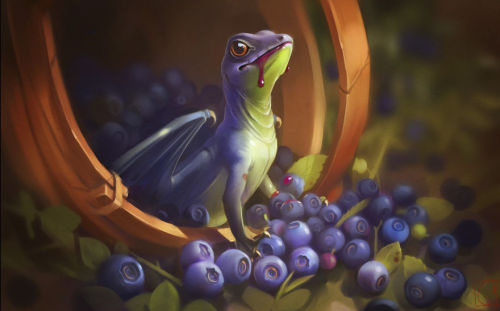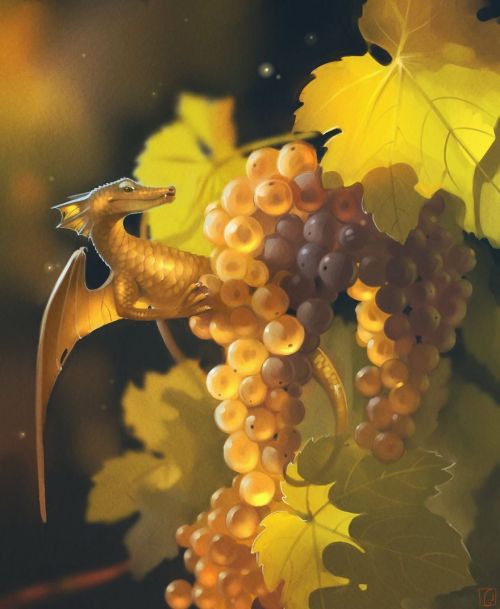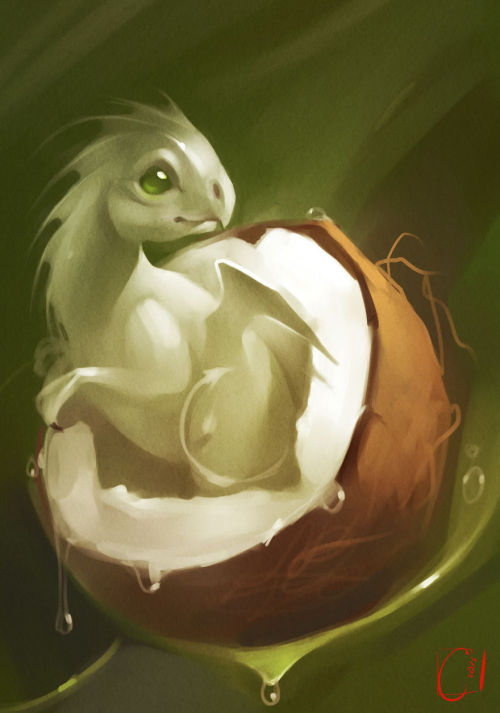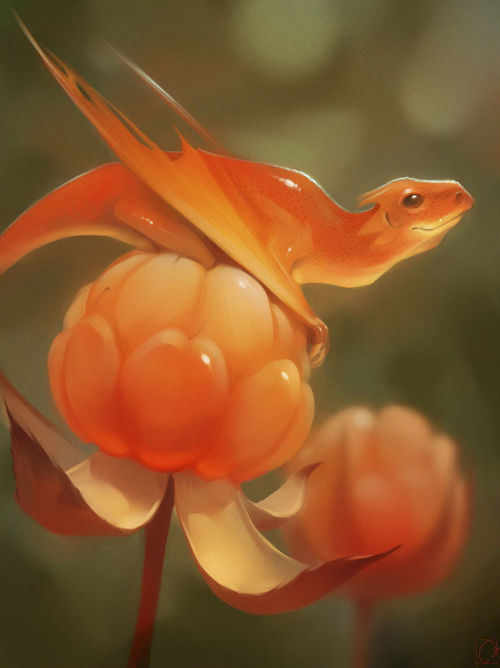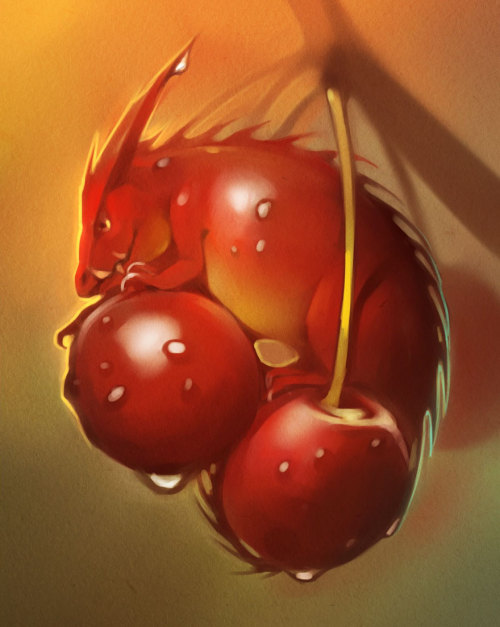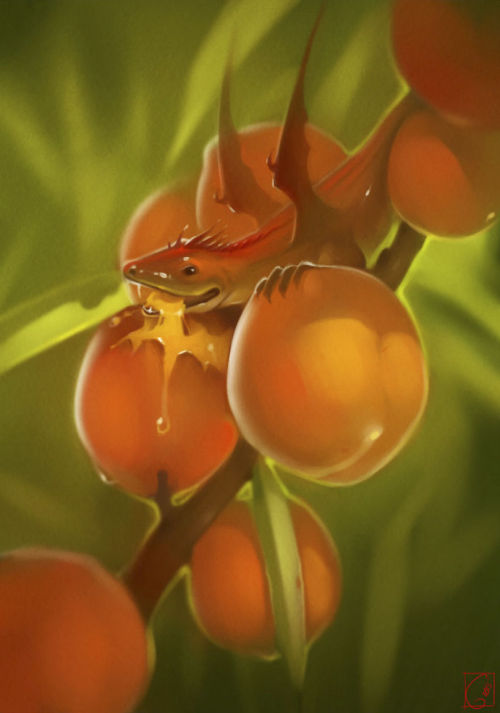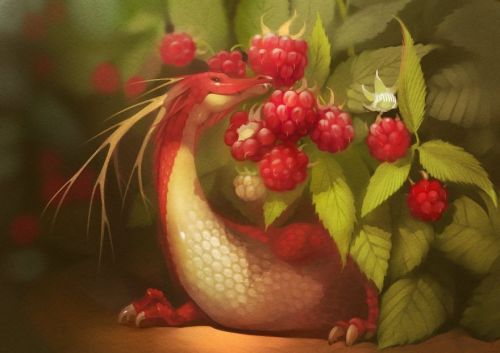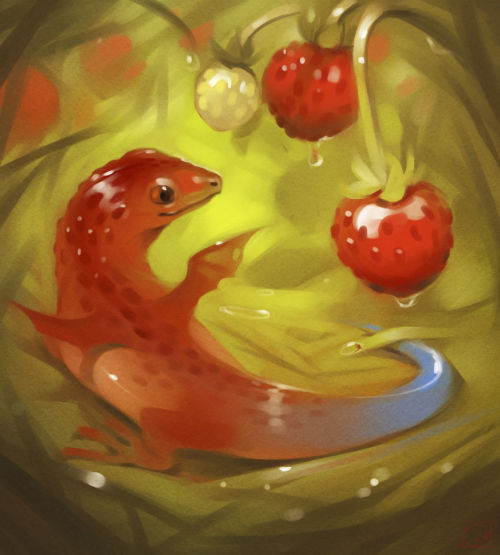Constellations And The Calendar
Constellations and the Calendar
Did you recently hear that NASA changed the zodiac signs? Nope, we definitely didn’t…
…Here at NASA, we study astronomy, not astrology. We didn’t change any zodiac signs, we just did the math. Here are the details:
First Things First: Astrology is not Astronomy…
Astronomy is the scientific study of everything in outer space. Astronomers and other scientists know that stars many light-years away have no effect on the ordinary activities of humans on Earth.
Astrology, meanwhile, is something else. It’s the belief that the positions of stars and planets can influence human events. It’s not considered a science.

Some curious symbols ring the outside of the Star Finder. These symbols stand for some of the constellations in the zodiac. What is the zodiac and what is special about these constellations?

Imagine a straight line drawn from Earth though the sun and out into space way beyond our solar system where the stars are. Then, picture Earth following its orbit around the sun. This imaginary line would rotate, pointing to different stars throughout one complete trip around the sun – or, one year. All the stars that lie close to the imaginary flat disk swept out by this imaginary line are said to be in the zodiac.

The constellations in the zodiac are simply the constellations that this imaginary straight line points to in its year-long journey.
What are Constellations?
A constellation is group of stars like a dot-to-dot puzzle. If you join the dots—stars, that is—and use lots of imagination, the picture would look like an object, animal, or person. For example, Orion is a group of stars that the Greeks thought looked like a giant hunter with a sword attached to his belt. Other than making a pattern in Earth’s sky, these stars may not be related at all.

Even the closest star is almost unimaginably far away. Because they are so far away, the shapes and positions of the constellations in Earth’s sky change very, very slowly. During one human lifetime, they change hardly at all.
A Long History of Looking to the Stars
The Babylonians lived over 3,000 years ago. They divided the zodiac into 12 equal parts – like cutting a pizza into 12 equal slices. They picked 12 constellations in the zodiac, one for each of the 12 “slices.” So, as Earth orbits the sun, the sun would appear to pass through each of the 12 parts of the zodiac. Since the Babylonians already had a 12-month calendar (based on the phases of the moon), each month got a slice of the zodiac all to itself.

But even according to the Babylonians’ own ancient stories, there were 13 constellations in the zodiac. So they picked one, Ophiuchus, to leave out. Even then, some of the chosen 12 didn’t fit neatly into their assigned slice of the pie and crossed over into the next one.

When the Babylonians first invented the 12 signs of zodiac, a birthday between about July 23 and August 22 meant being born under the constellation Leo. Now, 3,000 years later, the sky has shifted because Earth’s axis (North Pole) doesn’t point in quite the same direction.

The constellations are different sizes and shapes, so the sun spends different lengths of time lined up with each one. The line from Earth through the sun points to Virgo for 45 days, but it points to Scorpius for only 7 days. To make a tidy match with their 12-month calendar, the Babylonians ignored the fact that the sun actually moves through 13 constellations, not 12. Then they assigned each of those 12 constellations equal amounts of time.
So, we didn’t change any zodiac signs…we just did the math.
Make sure to follow us on Tumblr for your regular dose of space: http://nasa.tumblr.com
More Posts from Q587p and Others
Animal Crossing Fish - Explained #62
Brought to you by a marine biologist who has a pen…and has a pineapple…
CLICK HERE FOR THE AC FISH EXPLAINED MASTERPOST
Tell me if I’m referencing memes that are too old and watch me not care. Anyway, let’s go over the Sea Pineapple, because I bet you don’t know really what it is, and tbh, I didn’t for a second either. But it turns out it is a type of Sea Squirt, and therefore, of all the invertebrates in the game, we, as vertebrates, are most closely related to this thing. I’ll explain in a minute:

We here on Northern Hemisphere islands are able to dive for this thing all day and night, so if you haven’t caught one yet, just give it some time. Then, when you give your first one to Blathers, it’s put into the big coastal tank underneath the coral reef tank and it just…sits there. Which is totally understandable, considering this animal - yes, it’s an animal - lives a sessile life, meaning it attaches to something and stays there. It also filter feeds, so you see its little siphons opening and closing.
The Sea Pineapple is a real animal, Halocynthia roretzi and it’s eaten primarily in Korea and less so in Japan, despite the fact that a lot people say it tastes like not-food. But, hey, humans will eat anything.

So, Sea Pineapples are a kind of Sea Squirt, aka a Tunicate, a soft, squishy that sits on the seafloor and filter feeds. But despite this thing not having a face or an interesting lifestyle, the fact remains we’re more closely related to it than we are to the cooler invertebrates, like insects, worms, or octopuses. They belong in the Phylum Chordata with us, the even-more-interesting vertebrates. Now, I’m gonna try REAL HARD not to go off on a nerd-tastic tangent, but this is one of my favorite topics - chordate phylogeny.
So, what’s a Chordate? It is not synonymous with “vertebrate” although lots of us in the phylum are vertebrates. All animals in this phylum have 5 very distinct features that no other group has, either during our whole lives or part of our lives (that includes larval or embryonic stages). They are:
A post-anal tail, meaning our bodies extend past our anus.
We have a notochord, aka what my professor called “the stiffening rod of the body”. In humans, this is our spine.
A dorsal neural tube that, in us vertebrates, is the spinal cord, the main communication highway of the nervous system.
An endostyle/thyroid gland.
Pharyngeal slits, which often become gills in adult stages of chordates.
Although the Sea Pineapple doesn’t look like it has any of these features, its larvae do, which puts them in the same phylum as us vertebrates. Wild, huh?And this list of features puts us together with some weird stuff, the weirdest has to be tunicates, as shown by this phylogenetic tree:

^From this site. This should look kind of familiar since a stylized one is on the floor of the fossil section of the museum. I’ll do a special fish-explained to talk about that and how to read one of these. But basically, every node, or intersection of the branches represents the last common ancestor of the groups at the end of the branches. Once you can read these, you start to find out some very interesting, and mind-blowing facts, like, we’re all just derived fish and that birds evolved from dinosaurs and whales are most closely related with hoofed mammals and we’re related to boring tunicates instead of cooler things, like horseshoe crabs.
And there you have it. Fascinating stuff, no?
just learned a fun fact: so the kerb stones near the hague court have the word "peace" inscribed on them in different languages, right?
well, they have a ukrainian word there, too.
except it does not mean "peace".
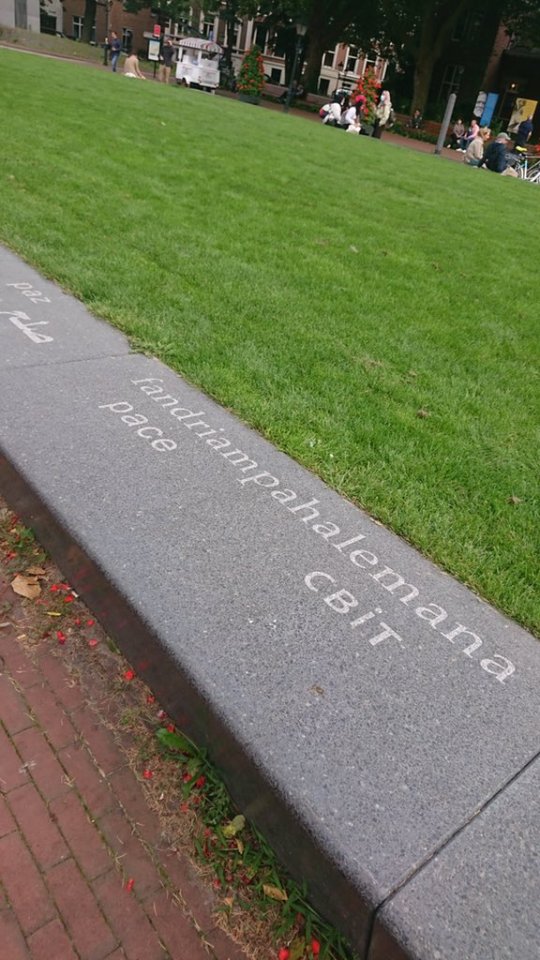
світ in ukrainian means "world".
and why did this oversight happen? well, you see, the words for "peace" and "world" are homographs (мир).... in russian. but not in ukrainian (мир and світ respectively).
translating from english (or french, or dutch, or belarusian, or most languages, really) into ukrainian won't lead you to "світ". translating from russian might.
so the person tasked with selecting the ukrainian word was obviously translating from russian, and picked the wrong word without doing a 2 minutes dictionary search to see if there was any difference.
and, since in the eyes of the west anyone with expertise in russia must automatically be a credible source on ukraine, there's the inscription, sitting nice and proud out there.


A Taxonomy of Magic
This is a purely and relentlessly thematic/Doylist set of categories.
The question is: What is the magic for, in this universe that was created to have magic?
Or, even better: What is nature of the fantasy that’s on display here?
Because it is, literally, fantasy. It’s pretty much always someone’s secret desire.
(NOTE: “Magic” here is being used to mean “usually actual magic that is coded as such, but also, like, psionics and superhero powers and other kinds of Weird Unnatural Stuff that has been embedded in a fictional world.”)
(NOTE: These categories often commingle and intersect. I am definitely not claiming that the boundaries between them are rigid.)
Keep reading
"Here, we should also mention the origin of the name "Ukraine. " Of course, this is not a "okraina" [russian] (there is no such word in the Ukrainian language at all - there is "okolytsia"), because in the 12th century, when this name arose, there was not a single state nearby that could call the powerful empire its "okraina" (Moscow, for example, was only founded in 1147). Instead, it is likely that the name "Ukraine" consists of two words: "u" (that is, "in", "inside") and "kraina" (country). This was the designation of the metropolis, or the ethnic lands of the Ruthenians, the owners of the empire of Kievan Rus, without taking into account the colonies. That is, Rus (the empire) minus the colonies equals the U-kraina ("inner lands"). In German, there is also a similar term - Inland (in - in, Land - land, country), which is used as a counterweight to Ausland. The emergence of this name was determined by the then processes of the empire's disintegration and the need for a separate designation of its "non-colonial" territories. But the old name Rus was preserved for Ukraine until the middle of the 15th century, as evidenced by numerous documents and chronicles, and for its separate parts until the 19th (Halychyna) and 20th (Transcarpathia) centuries. And Russia has approximately the same relation to the historical and cultural heritage of Kyivan Rus as its former colony Romania has to the corresponding heritage of the Roman Empire (Roma)..."
(c) Mykhailo Krasuskyi - THE ANTIQUITY OF THE UKRAINIAN LANGUAGE
Writing Tips
Punctuating Dialogue
✧
➸ “This is a sentence.”
➸ “This is a sentence with a dialogue tag at the end,” she said.
➸ “This,” he said, “is a sentence split by a dialogue tag.”
➸ “This is a sentence,” she said. “This is a new sentence. New sentences are capitalized.”
➸ “This is a sentence followed by an action.” He stood. “They are separate sentences because he did not speak by standing.”
➸ She said, “Use a comma to introduce dialogue. The quote is capitalized when the dialogue tag is at the beginning.”
➸ “Use a comma when a dialogue tag follows a quote,” he said.
“Unless there is a question mark?” she asked.
“Or an exclamation point!” he answered. “The dialogue tag still remains uncapitalized because it’s not truly the end of the sentence.”
➸ “Periods and commas should be inside closing quotations.”
➸ “Hey!” she shouted, “Sometimes exclamation points are inside quotations.”
However, if it’s not dialogue exclamation points can also be “outside”!
➸ “Does this apply to question marks too?” he asked.
If it’s not dialogue, can question marks be “outside”? (Yes, they can.)
➸ “This applies to dashes too. Inside quotations dashes typically express—“
“Interruption” — but there are situations dashes may be outside.
➸ “You’ll notice that exclamation marks, question marks, and dashes do not have a comma after them. Ellipses don’t have a comma after them either…” she said.
➸ “My teacher said, ‘Use single quotation marks when quoting within dialogue.’”
➸ “Use paragraph breaks to indicate a new speaker,” he said.
“The readers will know it’s someone else speaking.”
➸ “If it’s the same speaker but different paragraph, keep the closing quotation off.
“This shows it’s the same character continuing to speak.”
Decomposing Undertale’s Music Composition Structure
The Undertale soundtrack is enormously fun, expressive, and symbolically meaningful. It also, interestingly enough, is composed with a very small pallet of compositional techniques. The majority of tracks are written the same way. An astonishing number of Undertale’s OST songs contain most/all of the following elements:
An ostinato. If there is not an ostinato, there is still a background line that maintains repeated rhythmic and pitch movement patterns.
An ostinato introduction paradigm. The ostinato is introduced first, then the midground, then the melody.
Melody made of parallel periods. The melody consists of eight bar periods with a parallel question and answer phrase. That is, the first line of the melody and the second line of the melody start similarly and in a way “mirror” each other.
Everything melodic is repeated twice. Melodic structural units are played twice in a row before introducing something new.
Binary Form. The pieces overall consist of a Binary AABB form. That is, the piece starts with one big melodic theme and then ends with a second big melody theme.
Below, I will describe in depth how to structure and develop a “prototypical” Undertale track piece.
Step 1: Create an ostinato
An ostinato is a short unit of music that plays on repeat throughout a piece. The notes and rhythms stay exactly the same and are repeated over and over without stop. A good example of an ostinato is Pachelbel’s canon. The cellos play the same notes on repeat from start to end. That’s the ostinato.
A dramatically high percentage of the pieces in Toby Fox’s Undertale soundtrack make use of an ostinato, including but not limited to: “Fallen Down,” “Ruins,” “Ghost Fight,” “Heartache,” “Snowy,” “Snowdin Town,” “Bonetrousle,” “Nyeh Heh Heh!”, “Dummy!”, “Death by Glamour,” “An Ending,” “Here We Are,” “Amalgam,” “Gaster’s Theme,” “Battle Against a True Hero,” “Power of NEO,” and “Megalovania.”
To give an example, below is the notation to the four measure ostinato in “Megalovania”. You can hear this ostinato played by itself at the very beginning from 0:00-0:07. Note that when the bass line comes in 0:07, it is also a four measure repeating unit that recurs throughout much of “Megalovania.”

The first half of “Battle Against a True Hero” uses the ostinato I have transcribed below. It comes it right at the start of the piece (0:00) with the solo piano. The second half of the track is a second, different ostinato. Like “Megalovania,” the bass part is also an ostinato playing alongside the piano.

Below, the ostinato which starts (0:00) “Death by Glamour.”

The Ostinato in “Ruins” and “An Ending”, also introduced right at the start 0:00.

The point of the matter is, while ostinato is one compositional device that’s been used for centuries, it’s not present as frequently as Toby Fox himself uses it. He has an unusually high percentage of ostinato pieces; the Undertale soundtrack relies heavily on it.
If not an ostinato, something ostinato-like
Sometimes the background or mid-ground (that is, the part of the music that is not the melody but not the basic background) in an Undertale track is not a strict ostinato. That is, the same notes and pitches don’t repeat perfectly over and over and over again. However, when Fox doesn’t use a perfect ostinato, there is almost always something ostinato-like, a repeated rhythmic pattern that has an embedded pitch pattern as well. The notes might not be 100% the same every time they repeat, but it’s still a noticeable pattern.
For example, “Spear of Justice” and “NGAHHH!!” have a dramatic bass line that is built on a recurring rhythm. However, the chords of that bass line change around, so the notes aren’t exactly the same every time you hear an iteration of the rhythmic pattern. The notes usually arpeggiate (move up and down) the same way, though, along the same rhythms.
“Your Best Friend” is another example. Below is part of the accompaniment for that song. If you notice, there is a general four note pattern in which the notes move up and down the same way. The individual notes might change (as I have circled), but the pattern rhythmically and generally pitch-wise remains the same.

Step 2: Introduce the ostinato, then more accompaniment, then the melody and jam
What’s interesting is that it’s not just that there’s a liberal presence of ostinatos in the soundtrack, but that they’re frequently introduced, used, and implemented the same way each time. There is a certain “ostinato introduction paradigm” Toby Fox likes to use.
First, the ostinato is introduced by itself. Then, other accompaniment (non-melody) is layered on top of the ostinato. Last, the melody jumps in, oftentimes with the explosion of a more energetic drum rhythm. Sometimes the second step I mentioned is skipped, but this sort of pattern nevertheless manifests itself in piece after piece.
For example, “Battle Against a True Hero” begins with a solo piano playing the ostinato. After it plays the ostinato once, we get some mid-ground music at 0:05. After the mid-ground is introduced, Toby Fox inserts in the melody at 0:18. The drums kick in at the same time as the melody at 0:18.
Now listen to “Death by Glamour.” The ostinato starts by itself in a single instrument (also, amusingly, a piano). A few instruments are added on top of it between 0:06 and 0:25. At 0:25, the entire music ensemble is in and a melody is introduced. Though there was a kick drum earlier, it’s at 0:20, near to the introduction of the melody, that the drums really start going.
Exact same pattern.
Now listen to the start of “Megalovania.” It again begins with a single instrument line, a four measure ostinato. Then, at 0:07, a bass line is added below it. After that cycles through once, the entire ensemble jumps in at 0:15, the drums kick up, and we’re off to the races.
Exact same pattern.
And if you want more fun listening, check out “Dummy!” Ostinato at start. Midground at 0:07 with a bare bass drum. Melody at 0:22 with full drum set. Same thing happens in “Ghost Fight.” Same thing happens in “Snowdin Town.” Same thing happens in “Thundersnail.” Same thing happens in “Amalgam.” Same thing happens with many, many more tracks throughout the Undertale OST.
With the rhythmic patterned accompaniments that are not quite ostinatos, you still see the same sort of “ostinato” introduction paradigm. Examples of this include “Waterfall,” “Alphys,” “Temmie Village,” and “Metal Crusher.”
Toby Fox uses not only an ostinato frequently, but he also often uses this particular technique of introducing and developing the ostinato. It’s a stock trick of his. These pieces are written and developed the same way.
So the ostinato describes the accompaniment pattern Fox likes to utilize. But what about the melody? It turns out there are a lot of patterns Fox uses for melody, too.
Step 3: The melody consists of two parallel lines
A phrase is a line that sounds sort of like a musical sentence or, well, a phrase. It has a notable start and end point. If you were singing a phrase that had lyrics to it, the phrase would be one line of lyrics.
Toby Fox’s phrases are always four measures long. They also always come in pairs. This is a very common musical composition structure. A pair of phrases in fact has its own technical term - it’s called a period.
There are several different types of periods in music composition, but Toby Fox almost invariably uses the same one every time. He composes a parallel question and answer period.
“Question and answer” means that the second phrase sounds like it is resolving something the first phrase introduces. The first musical phrase ends in a sort of “question” - that is, it doesn’t sound finished when you reach the end of it. Just like a spoken question has raised intonation at the end (in English), it sounds like the musical phrase’s question is incomplete. The second musical phrase ends in an “answer” - that is, it ends the notes with a resolute conclusion and landing by the end. It sounds like the lowered, resolving intonation you hear when someone talking answers a question with a declarative sentence.
Now, phrases being question and answer is still pretty common in the music composition world. But what you also see in Undertale is that the phrases are parallel phrases, too. That is, the first phrase starts the same way that the second phrase does.
I could practically list the entire Undertale soundtrack for being culprit to the parallel question and answer eight bar periods. But I’ll pull out just a few examples to concretely show what’s going on.
One of the best examples of this melodic form is in “Your Best Friend” because the entire melody consists of that eight bar parallel question and answer period.

Period 1 is the first four measures, notated on the top line. Period 2 is the second four measures, notated on the bottom line. Notice that Periods 1 and 2 start the same way, and in fact the first 13 notes from each are exactly the same. Even when they do diverge pitches at the end, they still keep the same rhythm. Period 1 is considered a question because it ends on an F, which is the fifth scale degree of the key signature, a Bb, so Period 1 ends on the V chord. The V chord is considered to be an incomplete sound when you stop there. It’s a question. But Period 2 ends on the I chord with the first scale degree, the Bb, which is an answer or resolution.
To visually show another example, here’s “Nyeh Heh Heh!” / “Bonetrousle”:

In “Nyeh Heh Heh!”, only the first four notes of Period 1 completely match the pitches of those notes in Period 2. However, if you look at my arrows, you’ll notice we keep the same parallel up and down motion throughout each of the lines. The pitches still move directionally in the same way throughout the lines. Especially since the two phrases start the same characteristic way, and then bounce up and down the same way, we audiences hear a parallel question and answer.
But this structure is really everywhere. The dating themes. “Snowy.” “Spear of Justice.” You name it. It’s there.
Step 4: Everything melodic is repeated twice
Music has a lot of different structural units of different sizes. There are small units in music, like a four measure phrase. There are larger units, like an entire thematic section, which is usually labeled “A” or “B”. When Toby Fox has distinct melodic (or ostinatic) material, he repeats it twice before introducing something new.
Screencap of “Spear of Justice” sheet music from Jester Musician.

“Spear of Justice” is a perfect example of this “repeat in twos” paradigm. The song’s introduction consists of a four bar phrase repeated twice (0:00-0:05 and 0:05-0:10). Then the bass and drums come in. We hear a four bar unit again repeated twice (0:10-0:15 and 0:15-0:21). Then we switch key signatures. We hear a four bar unit again repeated twice (0:26 and 0:26-0:30). There is a little tag at the end finishing the A section and leading into the B section.
The first two phrases of the B section are exactly the same as one another and can be heard from 0:35-0:41 and 0:41-0:47. The next two phrases are also exactly the same as one another and can be heard from 0:47-0:53 and 0:53-0:58. So what Toby Fox does is play one phrase, repeat it, play a new phrase, repeat it. Rule of two. Then, he repeats this ENTIRE chunk from 0:35-0:58 again at 0:58-1:19. Here he’s got embedded layers of two.
For the rest of the B section, 1:19-1:31 is a period, and 1:31-1:41 is a repetition of that period. We get one last repetition of this period (which is identical to 1:31-1:41) before the song ends.
I could keep giving more examples of this exact same phenomenon throughout the soundtrack. “Home” has the opening guitar eight bar period repeated twice before the melody comes in. Then that melody is played twice. “Bonetrousle” has literally everything melodic duplicated in twos from start to finish. I’ll talk more about that piece later.
Toby Fox loves things in twos.
Step 5: Make it binary form
Binary form is a description of how a composition’s melodic themes are arranged. Binary form means that there are two main themes, “A” and “B”. The A theme gets played, thenb the B theme gets played, and then the piece is done. Usually in binary form, each theme gets played twice, so technically it’s AABB. This form is extremely, extremely common in Undertale.
To give just a few examples:
“Battle Against a True Hero” has an A section focusing on one melody and one ostinato from 0:00 to 1:35. Then, the rest of the piece is the B section, focusing on a second ostinato and melody.
“Nyeh Heh Heh!” and “Bonetrousle” are very simple, but technically you can divide them into two parts (by two periods that contain the entirety of the melody). The first period is the A section and is heard in Nyeh Heh Heh from 0:00-0:18 The second period is the B section and is heard from 0:18 to 0:32.
“Snowy” plays the same melody repeatedly from 0:00 to 1:02. The second half of the piece, the B section, goes from 1:02 to the end.
“Amalgam” has an A theme from 0:00 to 0:42. The B theme is 0:42 to the end.
“Enemy Approaching” has an A theme from 0:00 to 0:30. The B theme picks up from there and goes to the end of the piece.
“Here We Are” has an A section until about 0:43. When the piano takes over at that point, we enter the B theme. It continues more or less until the end of the piece.
A few pieces in Undertale have ternary structure, which means that you return to the A after the B is played. So, basically, they are ABA form. “Dummy!”, “Death by Glamour,” and “Heartbreak” are some examples of ternary structure in Undertale.
Examples: putting this all together
I will now go through several tracks in Undertale and show how they fall into all of these compositional steps and techniques. Lots of Undertale pieces really are written the same way.
Bonetrousle
Bonetrousle is introduced with a bass line that repeats every four notes. This pattern is basically an ostinato in the first half of the piece. However, it is to note the notes do change halfway through the song (at 0:30), and in the second half can only be described as a rhythmically patterned bass. Still, the accompaniment falls into exactly what I observed in the beginning of this analysis (Step 1).
The bass line is introduced by itself at 0:00 before the melody jumps in at 0:06 (Step 2).
The four note bass pattern is repeated four times (two twos) from 0:00-0:06 (Step 4).
The melody consists of a parallel question and answer period. The first phrase, the question, is 0:05-0:11, and the answer phrase is 0:12-0:18 (Step 3). I have already discussed how these are parallel phrases.
The period from 005:-0:18 is repeated at 0:18-0:30 - Rule of Twos (Step 4).
Bonetrousle consists of an A theme from 0:00-0:30 and a B from 0:30 to the end, making Bonetrousle binary form (Step 5).
The B theme consists of a period that is in parallel question and answer form. The question phrase is 0:30-0:37 and the answer phrase is 0:38-0:43 (Step 3).
The period from 0:30-0:43 is repeated at 0:43-0:58 because, of course, everything melodic has to be played twice (Step 4).
Battle Against a True Hero
The piece begins with an ostinato playing by itself (Step 1). The ostinato is, in a way, a parallel question and answer (Step 3).
The ostinato introduction paradigm is met. The ostinato plays by itself once from 0:00-0:05. Mid-ground music is added on top of the ostinato 0:05. After the mid-ground is introduced, Toby Fox inserts in the melody at 0:18. The drums kick in at the same time as the melody at 0:18 (Step 2).
The mid-ground introductory section is played twice at 0:05-0:11 and 0:11-0:18 (Step 4).
The melody is in periods with parallel phrases (Step 3).
The first two lines of the melody are played twice at 0:19-0:30 and 0:31-0:43 (Step 4).
The second two lines of the melody are played twice at 0:43-0:56 and 0:57-1:08. Then, this whole thing, 0:43-1:08, is then repeated from 1:08-1:34. Twos two twos everywhere (Step 4).
The A theme plays from 0:00-1:35. The B theme plays from 1:35 to the end, making “Battle Against a True Hero” binary form (Step 5).
The B theme starts with a new ostinato, introduced by itself in the piano (Step 1). At 1:45, strings are layered on top of the ostinato. At 1:54, everyone comes in, including the bass, the melody, and the drums. That’s the ostinato introduction paradigm being implemented a second time in this track (Step 2).
The B melody consists of a parallel question and answer period. The question can be heard from 1:55-2:03 and the answer is 2:03-2:13. If you notice, these are parallel phrases because they start the same way, and in fact have many notes in common before they end slightly differently (Step 3).
The melody is repeated twice 1:55-2:13 and 2:14-2:37 (Step 4).
Enemy Approaching
The main groove is introduced from 0:00-0:10. The rhythmic bass pattern heard at the bottom is consistent throughout the entire song (Step 1).
The accompaniment and mid-ground are introduced at 0:00-0:09. The melody kicks up at 0:10 with a fuller drum kit (Step 2).
The melody consists of a period with parallel question and answer phrases. The question can be heard from 0:10-0:15; the answer is 0:15-0:20. Note that both phrases start the same way - they’re definitely parallel and share a lot of notes in common (Step 3).
The period from 0:10-0:21 is repeated at 0:20-0:30.
You could call the first half of the melody from 0:00-0:30 an A and the second half of the melody from 0:30-0:56 a B, in which case you could argue this is binary structure (Step 4).
The period in B is a parallel question and answer. The question is 0:30-0:35 and the answer is 0:36-0:41 (Step 3).
The period from 0:30-0:41 is repeated at 0:41-0:56, because of course everything melodic has to be done in twos (Step 4).
These are just a few examples. There’s no need to go through every piece, but suffice it to say, my generalizations hold up to a large number of the tracks in the Undertale OST. Not every piece correlates to what I have mentioned, but many of them do.
It is really fascinating to see the diversity of melodies and moods that can be created from such a simple compositional structure. Yes, while the limited composition technique makes many tracks predictable and less original, the common form still shows us how one technique can be implemented multiple times to make many memorable and enjoyable songs. The structure also, in its own odd way, cements the pieces together to sound like a uniform soundtrack.
It is interesting to me, as a composer, to see how different composers structure their pieces. It allows us musicians to see what does and does not work. Toby Fox, while he sticks with one structure for a large portion of his pieces, uses a structure that works. By looking at this, we can listen, understand, and perhaps appreciate the solid structure within the Undertale OST.
• An Oxford comma walks into a bar, where it spends the evening watching the television, getting drunk, and smoking cigars.
• A dangling participle walks into a bar. Enjoying a cocktail and chatting with the bartender, the evening passes pleasantly.
• A bar was walked into by the passive voice.
• An oxymoron walked into a bar, and the silence was deafening.
• Two quotation marks walk into a “bar.”
• A malapropism walks into a bar, looking for all intensive purposes like a wolf in cheap clothing, muttering epitaphs and casting dispersions on his magnificent other, who takes him for granite.
• Hyperbole totally rips into this insane bar and absolutely destroys everything.
• A question mark walks into a bar?
• A non sequitur walks into a bar. In a strong wind, even turkeys can fly.
• Papyrus and Comic Sans walk into a bar. The bartender says, "Get out -- we don't serve your type."
• A mixed metaphor walks into a bar, seeing the handwriting on the wall but hoping to nip it in the bud.
• A comma splice walks into a bar, it has a drink and then leaves.
• Three intransitive verbs walk into a bar. They sit. They converse. They depart.
• A synonym strolls into a tavern.
• At the end of the day, a cliché walks into a bar -- fresh as a daisy, cute as a button, and sharp as a tack.
• A run-on sentence walks into a bar it starts flirting. With a cute little sentence fragment.
• Falling slowly, softly falling, the chiasmus collapses to the bar floor.
• A figure of speech literally walks into a bar and ends up getting figuratively hammered.
• An allusion walks into a bar, despite the fact that alcohol is its Achilles heel.
• The subjunctive would have walked into a bar, had it only known.
• A misplaced modifier walks into a bar owned by a man with a glass eye named Ralph.
• The past, present, and future walked into a bar. It was tense.
• A dyslexic walks into a bra.
• A verb walks into a bar, sees a beautiful noun, and suggests they conjugate. The noun declines.
• A simile walks into a bar, as parched as a desert.
• A gerund and an infinitive walk into a bar, drinking to forget.
• A hyphenated word and a non-hyphenated word walk into a bar and the bartender nearly chokes on the irony
- Jill Thomas Doyle
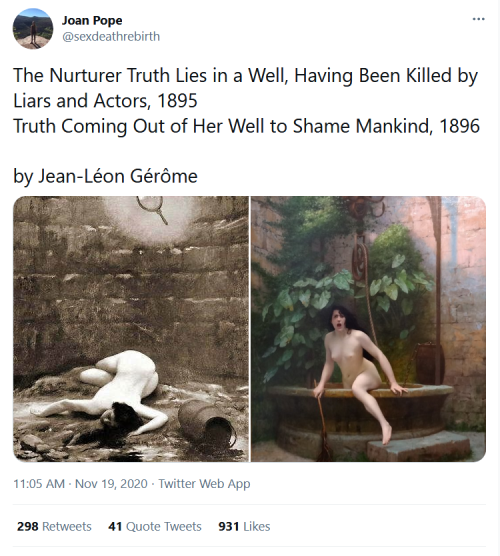
THERE IS A PREQUEL, Y’ALL
original tweet
-
 neptunianfairy liked this · 2 weeks ago
neptunianfairy liked this · 2 weeks ago -
 fairyspacepunk reblogged this · 2 weeks ago
fairyspacepunk reblogged this · 2 weeks ago -
 fairyspacepunk liked this · 2 weeks ago
fairyspacepunk liked this · 2 weeks ago -
 sunsetdeathcity liked this · 4 weeks ago
sunsetdeathcity liked this · 4 weeks ago -
 wisegirl25 liked this · 1 month ago
wisegirl25 liked this · 1 month ago -
 eel-of-the-void reblogged this · 2 months ago
eel-of-the-void reblogged this · 2 months ago -
 i-made-the-sky-purple reblogged this · 2 months ago
i-made-the-sky-purple reblogged this · 2 months ago -
 i-made-the-sky-purple liked this · 2 months ago
i-made-the-sky-purple liked this · 2 months ago -
 arerepostsofizzyizumiworkdeleted reblogged this · 2 months ago
arerepostsofizzyizumiworkdeleted reblogged this · 2 months ago -
 shamyatha liked this · 2 months ago
shamyatha liked this · 2 months ago -
 soonini1288 liked this · 2 months ago
soonini1288 liked this · 2 months ago -
 dracha1991 liked this · 2 months ago
dracha1991 liked this · 2 months ago -
 spacerockfloater liked this · 2 months ago
spacerockfloater liked this · 2 months ago -
 chuustrider reblogged this · 3 months ago
chuustrider reblogged this · 3 months ago -
 chuustrider reblogged this · 3 months ago
chuustrider reblogged this · 3 months ago -
 chuustrider liked this · 3 months ago
chuustrider liked this · 3 months ago -
 indighost17 reblogged this · 3 months ago
indighost17 reblogged this · 3 months ago -
 morphinez liked this · 3 months ago
morphinez liked this · 3 months ago -
 roseate-felidae liked this · 4 months ago
roseate-felidae liked this · 4 months ago -
 thenerdyrehelps liked this · 4 months ago
thenerdyrehelps liked this · 4 months ago -
 darnitjack liked this · 4 months ago
darnitjack liked this · 4 months ago -
 xxriverspirit reblogged this · 4 months ago
xxriverspirit reblogged this · 4 months ago -
 xxriverspirit liked this · 4 months ago
xxriverspirit liked this · 4 months ago -
 annoyingbean630 liked this · 4 months ago
annoyingbean630 liked this · 4 months ago -
 slightlyobsessedwithharrystyles reblogged this · 4 months ago
slightlyobsessedwithharrystyles reblogged this · 4 months ago -
 slightlyobsessedwithharrystyles liked this · 4 months ago
slightlyobsessedwithharrystyles liked this · 4 months ago -
 thiefofgenders reblogged this · 4 months ago
thiefofgenders reblogged this · 4 months ago -
 chaos-pit liked this · 5 months ago
chaos-pit liked this · 5 months ago -
 f4t4-m0rg4n4 reblogged this · 5 months ago
f4t4-m0rg4n4 reblogged this · 5 months ago -
 pococurantesupremediety reblogged this · 5 months ago
pococurantesupremediety reblogged this · 5 months ago -
 secondbestsam liked this · 5 months ago
secondbestsam liked this · 5 months ago -
 hikari-m reblogged this · 5 months ago
hikari-m reblogged this · 5 months ago -
 kalebarley reblogged this · 5 months ago
kalebarley reblogged this · 5 months ago -
 furmity reblogged this · 5 months ago
furmity reblogged this · 5 months ago -
 hyperion0451 liked this · 5 months ago
hyperion0451 liked this · 5 months ago -
 chaoticgenderpuddle liked this · 5 months ago
chaoticgenderpuddle liked this · 5 months ago -
 towalkmyownpath reblogged this · 5 months ago
towalkmyownpath reblogged this · 5 months ago -
 glowyjellyfish reblogged this · 5 months ago
glowyjellyfish reblogged this · 5 months ago -
 glowyjellyfish liked this · 5 months ago
glowyjellyfish liked this · 5 months ago -
 roguemortal reblogged this · 5 months ago
roguemortal reblogged this · 5 months ago -
 zarohk reblogged this · 5 months ago
zarohk reblogged this · 5 months ago -
 furmity liked this · 5 months ago
furmity liked this · 5 months ago -
 ultrablueberryme liked this · 5 months ago
ultrablueberryme liked this · 5 months ago -
 glaxyjellyfish reblogged this · 5 months ago
glaxyjellyfish reblogged this · 5 months ago -
 balljointedfairy liked this · 5 months ago
balljointedfairy liked this · 5 months ago -
 cloud-obsessed-infp liked this · 5 months ago
cloud-obsessed-infp liked this · 5 months ago -
 silverblood10 liked this · 5 months ago
silverblood10 liked this · 5 months ago -
 stonelarkquetzal reblogged this · 5 months ago
stonelarkquetzal reblogged this · 5 months ago -
 southsuns liked this · 5 months ago
southsuns liked this · 5 months ago

